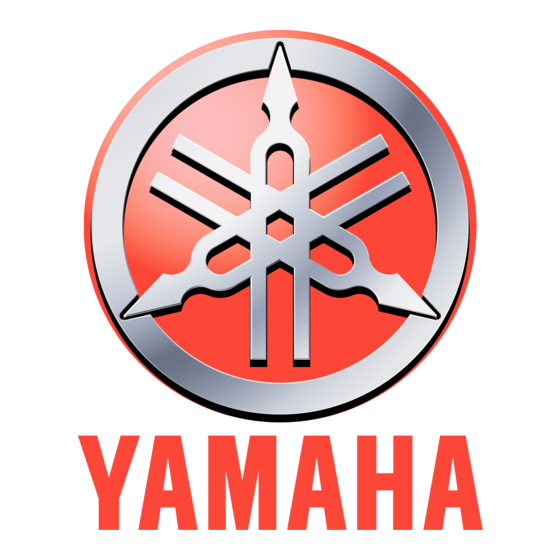
Summarization of Contents
introduction
Be a Responsible Owner
Explains owner's responsibilities and rider requirements for safe motorcycle operation.
Safe Riding
Provides essential guidelines and precautions for safe motorcycle riding practices.
Safety Information
Protective Apparel
Details the importance and types of protective clothing and gear for rider safety.
Avoid Carbon Monoxide Poisoning
Warns about carbon monoxide dangers from exhaust and how to avoid poisoning.
Loading
Guidance on safely adding cargo/accessories, including weight limits.
Aftermarket Parts, Accessories, and Modifications
Advises caution regarding non-genuine parts/modifications and potential safety hazards.
Further Safe-Riding Points
Offers additional tips for safe riding, including signaling, braking on wet roads, and road hazards.
Helmets
Emphasizes helmet importance, selection criteria, and correct wearing for head injury prevention.
Types of Helmets and Their Usage
Describes different helmet types and their recommended usage based on riding speeds.
Description
Left View
Illustrates and labels components visible on the left side of the motorcycle.
Right View
Illustrates and labels components visible on the right side of the motorcycle.
Controls and Instruments
Details and labels controls and instruments on handlebars and dashboard.
Instrument and Control Functions
Main Switch
Explains main switch functions (ON, OFF, LOCK) and steering lock mechanism.
Keyhole Cover
Describes how to open and close the keyhole cover for ignition access.
Indicator and Warning Lights
Identifies and explains instrument panel indicator and warning lights.
Speedometer Unit
Details speedometer, odometer, and fuel meter functions.
Handlebar Switches
Explains left/right handlebar switch functions: dimmer, turn signal, horn, starter.
Front Brake Lever
Describes the front brake lever's location and operation.
Rear Brake Lever
Explains the rear brake lever's location and operation.
Fuel Tank Cap
Details fuel tank cap removal/installation and safety precautions.
Fuel
Covers recommended fuel, capacity, and refueling safety.
Catalytic Converters
Explains catalytic converters and hot exhaust system safety.
Starter (Choke) Lever
Describes the starter (choke) lever for cold engine starts.
Kickstarter
Explains how to use the kickstarter if the electric starter fails.
Seat
Details how to open/close the seat and a tip for securing it.
Helmet Holders
Explains helmet holder location and use, including safety warnings.
Storage Compartment
Describes the under-seat storage compartment and its load limits.
Luggage Hook
Explains the luggage hook's use and load limits.
Operation and Important Riding Points
Starting and Warming Up a Cold Engine
Step-by-step instructions for starting and warming up a cold motorcycle engine.
Starting Off
Guides on safely starting to move the motorcycle from a stationary position.
Acceleration and Deceleration
Explains speed control via throttle grip adjustment.
Braking
Covers braking techniques, warnings for slippery surfaces, and downhill riding.
Engine Break-in
Details the critical 0-1000 km engine break-in period and guidelines for engine longevity.
Periodic Maintenance and Adjustment
Owner's Tool Kit
Describes the owner's tool kit location and purpose for basic maintenance.
Periodic Maintenance Chart for the Emission Control System
Outlines periodic maintenance for emission controls based on mileage.
General Maintenance and Lubrication Chart
Comprehensive chart for regular maintenance and lubrication of motorcycle parts.
Removing and Installing Cowlings and Panels
Instructions for removing/reinstalling body panels for maintenance access.
Checking the Spark Plug
Explains how to check spark plug condition, gap, and its relation to engine health.
Engine Oil and Oil Strainer
Details checking engine oil level and changing oil/cleaning strainer.
Final Transmission Oil
Guides on checking/changing final transmission oil, including type and quantity.
Air Filter and V-Belt Case Air Filter Elements
Explains air filter maintenance: cleaning and replacement.
Adjusting the Carburetor
Discusses carburetor adjustment, recommending dealer service for complex tasks.
Adjusting the Engine Idling Speed
Details checking and adjusting the engine's idle speed.
Adjusting the Throttle Cable Free Play
Explains checking and adjusting throttle cable free play for proper throttle response.
Tires
Covers tire specs, importance of pressure, and minimum tread depth for safety.
Tire Air Pressure
Details recommended tire pressures for loads and checking cold tires.
Wheels
Guidance on checking wheel rims/spokes and importance of balancing after tire changes.
Checking the Front Brake Pads and Rear Brake Shoes
Describes checking brake pad/shoe wear using indicator grooves.
Checking the Brake Fluid Level
Details checking brake fluid level, recommended fluid, and precautions.
Troubleshooting
Introduces troubleshooting common issues and the role of Yamaha dealers.
Troubleshooting Chart
Provides a chart to diagnose and resolve common starting/operational problems.
Motorcycle Care and Storage
Care
Importance of regular care for appearance, performance, and longevity; cleaning instructions.
Storage
Procedures for short-term and long-term storage to prevent damage and degradation.
Long-term Storage
Detailed instructions for long-term storage: fuel, engine, and battery preparation.
Consumer Information
Identification Numbers
Explains location of key numbers for service, registration, and theft reference.
Vehicle Identification Number
Explains the location and importance of the VIN for registration and identification.
Engine Serial Number
Shows where to find the engine serial number for parts ordering and service.
















Need help?
Do you have a question about the MIO AL115C 2010 and is the answer not in the manual?
Questions and answers